|
TRANSLATE THIS ARTICLE
Integral World: Exploring Theories of Everything
An independent forum for a critical discussion of the integral philosophy of Ken Wilber
 David Christopher Lane, Ph.D.
Professor of Philosophy, Mt. San Antonio College Lecturer in Religious Studies, California State University, Long Beach Author of Exposing Cults: When the Skeptical Mind Confronts the Mystical (New York and London: Garland Publishers, 1994) and The Radhasoami Tradition: A Critical History of Guru Succession (New York and London: Garland Publishers, 1992). David Christopher Lane, Ph.D.
Professor of Philosophy, Mt. San Antonio College Lecturer in Religious Studies, California State University, Long Beach Author of Exposing Cults: When the Skeptical Mind Confronts the Mystical (New York and London: Garland Publishers, 1994) and The Radhasoami Tradition: A Critical History of Guru Succession (New York and London: Garland Publishers, 1992).
DOUBTING MIND
Great Skeptical Thinkers
Susan Blackmore |
Brian Cox |
Martin Gardner |
Sam Harris |
Christopher Hitchens |
Harry Houdini |
Ray Hyman |
Phillip J. Klass |
Joe Nickell |
James Randi |
Adam Savage |
Eugenie Scott
Joe NickellJiselle RamirezBorn on December 1, 1944, Joe Nickell is an American paranormal investigator, author and skeptic. Known as “the world's only full-time paranormal investigator”, Joe Nickell has devoted his life to searching for the truth. Nickell is a senior research fellow for the Committee for Skeptical Inquiry (CSI), the associate dean of the Center for Inquiry Institute, and author/editor of over 30 books. Joe Nickell was born in 1944 to J. Wendell Nickell and Ella Nickell (maiden name Turner) and grew up in Kentucky. Nickell completed his bachelor's degree in 1967, master's degree in 1982, and doctorate degree in 1987--all completed at the University of Kentucky. For his graduate studies, Nickell decided to focus on folklore. 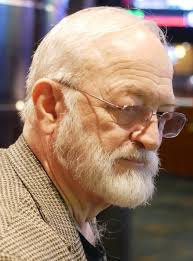 Joe Nickell Joe Nickell is currently married to Diana G. Harris, and they were wed on April 1, 2006. According to Joe Nickell's website, Joe and Diana were college sweethearts, but in 1966, Diana left him to return to her previous boyfriend. Reconnecting in the fall of 2003, Nickell learned that he had a daughter (Cherette) and two grandsons (Tyner and Chase) with his college sweetheart Diana. Nickell describes in a Skeptical Inquirer article titled “Intuition: The Case of the Unknown Daughter”, that Cherette had had a feeling of doubt that the father she had known as her father (Harris' first husband) was actually her father, because there was little physical resemblance with her “father's'” side of the family. Nickell states in that article that “I must admit to a new appreciation of intuition, without which I would not have known of my wonderful daughter and two grandsons! It's enough to warm an old skeptic's heart.” With DNA testing it was proven to be that Cherette was indeed his daughter that he had never known about. Elated to learn of a family that he never knew about, Nickell and Harris were reconnected, and later married. From late 1968 until 1977, Joe Nickell was wanted by the FBI for fleeing the country and avoiding the draft during the Vietnam War. Many young men during this time fled to neighboring countries to avoid the draft for military service and jail, either for their own anti-war beliefs or out of fear. Nickell helped to contribute his side of the story in a book called The New Refugees: American Voices in Canada, edited by Jim Christy and published in 1972. The book itself is a collection of 18 essays, all written by American draft dodgers, deserters and war protesters, that have fled to Canada for either permanent or temporary residence. While living in Toronto, Nickell followed his childhood interest of magic and became the Resident Magician at the Houdini Hall of Fame in Ontario, Canada in the summertime. He performed his last shows as a full-time professional stage magician in 1973, and after that began working as a private investigator. Gathering information from Nickell's website, he worked as a private investigator from 1973 to 1975 and never officially disclosed which detective agency it was, though he did heavily hint that it was the Pinkerton National Detective Agency. (Nickell hinted at this by saying that the agency he worked at started with a 'P' and they pursued the Jesse James Gang, which the Pinkerton Detective Agency famously did). For general assignments, Nickell would conduct background investigations, check surveillance and be a bodyguard. Working mostly in undercover jobs, he had several stints as a shipper/receiver, forklift driver, mail clerk, steelworker, lens polisher and tavern waiter in order to uncover whatever the case needed for each particular job. Nickell lived in Toronto until President Jimmy Carter pardoned many draft deserters in January 1977. Later Nickell did some work consulting Hollywood movies about investigators. The 2007 movie The Reaping was based partly on Nickell's own career and he was asked to consult the script writers and Hilary Swank herself. He even appeared briefly on the movie's DVD. When asked about this experience by writer Alistair Strachan, Nickell says that he “liked the first 10 or 15 minutes, where the character seemed to be doing something similar to what I do. But then it changed into the world of the supernatural, which, for good or evil, has never happened to me.” While he describes Hilary Swank as a perfectly nice person, he did have some problems with the switch to the paranormal, simply for the drama of the movie. Strachan asked if “you are taking an opposite stance from believers who are immersed in the paranormal but at the same time you are clearly drawn to it and you spend your life thinking about these issues. What do you make of that?”, Nickell responded that he too felt the “emotional draw of the paranormal” and then recounted a story of when he visited a family who thought their house was haunted. He talks about how the family lived in a spooky looking old Victorian home and felt that “If this place isn't haunted, it ought to be”. He describes how the house was imposing in nature with its grandeur and the history behind it, and that could have led the family to believing that their house was haunted by something paranormal. He feels that when thinking rationally “we have to think with the organ above the neck rather than the one below?”, meaning to think with your brain and logic, rather than with your heart and superstitions. Nickell and others have contended that The Shroud of Turin is not the burial cloth of Jesus, but rather a painting on linen that was made in the 14th century. Many religious people believe that the man is Jesus and the fabric is the burial shroud that Jesus was wrapped in after crucifixion. It is currently held in Rome and is sometimes allowed for public viewing. In one of Nickell's books, Inquest On The Shroud of Turin, he argues that the facial proportions would not have been used at the time and that it is more similar to the facial proportions of the Gothic era. In an article written for Skeptical Inquirer entitled “Fake Turin Shroud Deceives National Geographic Author” Nickell argues that the “blood” on the shroud that many believe to be the blood of Jesus Christ has been tested under “microscopical, chemical, biological, and instrumental tests for blood” and none have tested positive for blood. He argues that the shroud does not have any proper history to its existence and seems relegated only to the 14th century. Radiocarbon dating of the shroud proves that it originates from the 14th century, when it was “fraudulently claimed to be the Holy Shroud of Christ”. Nickell states that he thought of himself mostly as a writer, but through the years has been able to cataloged under 1,066 different personas. Ranging from Bigfoot hunter, to environmentalist, to private investigator, to movie critic, Joe Nickell has led a very fascinating life. Nickell is currently still writing for the Skeptical Inquirer and continues to be a Senior Research Fellow of the Committee for Skeptical Inquiry (CSI). Further Reading1. Real-Life X-Files: Investigating the Paranormal , University Press of Kentucky; ` edition (October 24, 2001) 2. The Magic Detectives: Join Them in Solving Strange Mysteries, Prometheus (September 1, 1989) 3. Inquest on the Shroud of Turin: Latest Scientific Findings, Prometheus; Subsequent edition (July 1, 1998) 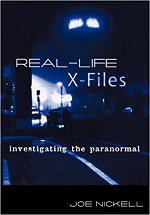 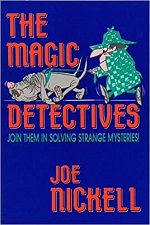 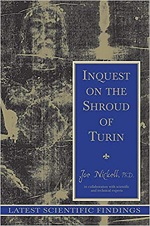
PREFACE | David Christopher Lane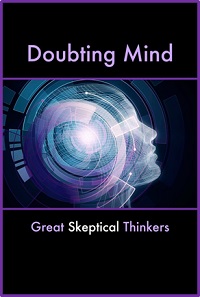
Before the current pandemic altered our day to day lives, the MSAC Philosophy Group had been working on a book entitled, Doubting Mind: Great Skeptical Thinkers, which contained separate essays on a number of notable researchers who champion critical thinking and skepticism when analyzing paranormal claims, such as UFOs, astrology, and various religious claims. The book has now been finished, though it took a bit longer than we anticipated. The word skeptical has too often been conflated with the word cynical. The former term comes from the Greek word skepsis which properly defined means "to look, view, observe." Or, as Miguel de Unamuno explained in 1924 in his book, Essays and Soliloquies, "Skeptic does not mean him who doubts, but him who investigates or researches as opposed to him who asserts and thinks that he has found." To be cynical, on the other hand, indicates that the person is "[pre] disposed to disbelieve or doubt the sincerity or value of social usages or personal character or motives and to express it by sarcasm and sneers, disparaging of the motives of others, captious, peevish." Therefore, it is important to understand that a skeptic is not one who ad hoc dismisses borderland ideas, but is one who is willing to go the extra mile to gather more (not less) information about any given phenomenon. As I have often remarked (to the obvious consternation of certain cult followers), we, humans, are too gullible when we accept miraculous claims without further investigation. We are cheap sluts for the paranormal, believing too easily in conspiracy theories that defy the known law of physics. There are many reasons why this is so, but I suspect that in a world where everything eventually eats one another to survive (whether it be a vegan eating plants or a carnivore eating meat), any organism that can develop a buffering illusion to survive such a horror show has an evolutionary advantage over others that cannot. This came into sharper relief for me this past week as I watching the British made television mini-series, War of the Worlds, where in one particularly poignant scene a mother who has just witnessed the death of her children at the hands of an alien species realizes that there is no point in continuing to live in such a horrific environment. She opts to shoot herself and the viewer instead of being shocked perfectly sympathizes with her decision. Nature is a madhouse if looked at objectively and therefore it is not surprising that we have evolved all sorts of mental defense systems in order to live long enough on terra firma to pass on our genetic heritage. Since we are the survivors in this boiling cauldron of eat or be eaten, we have inherited a variety of tools to ward off the true existential dread that can overcome any being that becomes too keenly aware of how this DNA game plays out. I mention all this as a necessary preface, since no matter how well versed we may become in science (and trained to become good doubters, in the positive sense of that term), we still retain at the core of our beings a deeply emotional component that defies a purely rational or logical way of being. We may act like scientists from time to time, but we are not scientists in the long term. We are vulnerable creatures and our myths and our fairy tales will persist even if we opt for agnosticism or atheism, though they may take on a different color and hue and justifications. Thus, this book provides us with but a small glimpse of how to think more rationally and critically, despite the sobering realization that we cannot be great skeptics all the time.
Comment Form is loading comments...
|